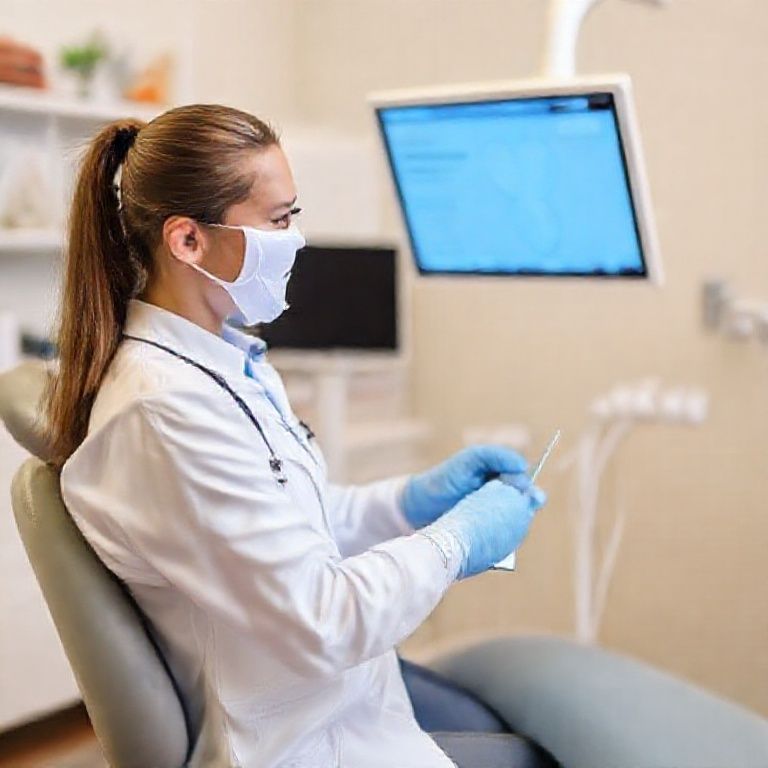Panoramic Dental X-Ray Cost in the UK: Comprehensive Guide
In the realm of modern dentistry, panoramic dental X-rays play a critical role in diagnosing and treating a variety of oral health issues. Unlike traditional intraoral X-rays, panoramic X-rays provide a comprehensive view of the entire mouth in a single image, including the teeth, jaws, nasal area, and sinuses. This advanced imaging technique is crucial for detecting problems that may not be visible through a regular dental examination. However, the cost of panoramic dental X-rays in the UK can vary significantly depending on several factors. This article provides an in-depth exploration of panoramic dental X-rays, detailing their importance, factors affecting their cost, typical price ranges across the UK, and much more. Whether you’re a patient considering this diagnostic tool or a healthcare professional seeking detailed information, this guide will provide valuable insights.

Understanding Panoramic Dental X-Rays
What is a Panoramic Dental X-Ray?
A panoramic dental X-ray, also known as an orthopantomogram (OPG), is a type of extraoral X-ray that captures the entire mouth in one image. Unlike traditional dental X-rays, which require the film to be placed inside the mouth, panoramic X-rays capture images externally. The X-ray machine rotates around the head, producing a broad view of the teeth, upper and lower jaws, sinuses, and other critical structures. This wide-angle image is crucial for identifying a variety of dental issues, from tooth decay to bone abnormalities.
How Does a Panoramic Dental X-Ray Work?
Panoramic X-rays use a small dose of ionizing radiation to capture detailed images of the entire oral structure. The process involves a rotating arm that holds the X-ray source and the detector. The patient is positioned so that the X-ray machine rotates around their head, taking images from multiple angles. These images are then combined into a single panoramic image. This technology allows for a comprehensive view of the mouth, providing essential information that cannot be obtained from standard X-rays.
Why are Panoramic Dental X-Rays Important?
Panoramic dental X-rays are essential for diagnosing a wide range of dental and oral health issues. They are particularly useful for:
- Detecting impacted teeth
- Evaluating jawbone abnormalities
- Assessing the severity of gum disease
- Planning orthodontic treatments
- Detecting cysts, tumors, and other growths
- Evaluating the position of wisdom teeth
- Monitoring the development of the jaws in children
By providing a complete view of the mouth, panoramic X-rays help dentists make accurate diagnoses and develop effective treatment plans.
Factors Affecting the Cost of Panoramic Dental X-Rays in the UK
The cost of panoramic dental X-rays in the UK can vary widely based on several factors. Understanding these factors can help patients make informed decisions about their dental care.
1. Location of the Dental Practice
The geographic location of the dental practice plays a significant role in determining the cost of panoramic dental X-rays. Generally, dental practices in urban areas, particularly in London and other major cities, tend to charge higher fees compared to those in rural areas. The higher cost of living, increased overhead expenses, and higher demand for dental services in cities contribute to this price disparity.
2. Type of Dental Practice
The type of dental practice also influences the cost of panoramic X-rays. Private dental clinics typically charge more than NHS practices. However, private practices may offer more flexible appointment times, shorter waiting periods, and additional services, which can justify the higher cost. On the other hand, NHS practices offer standardized pricing, making them a more affordable option for many patients.
3. Experience and Expertise of the Dentist
The experience and expertise of the dentist or radiologist performing the panoramic X-ray can also affect the cost. Highly experienced professionals may charge more for their services due to their advanced skills and knowledge. Additionally, specialists who focus on specific areas of dentistry, such as oral surgery or orthodontics, may charge higher fees for panoramic X-rays, especially if the images are used for complex diagnoses or treatment planning.
4. Equipment and Technology Used
The quality and sophistication of the equipment used for panoramic X-rays can impact the cost. Dental practices that invest in the latest imaging technology may charge more to cover the cost of the equipment. High-resolution digital X-rays, for example, may come at a premium compared to traditional film-based X-rays. The use of advanced technology can lead to more accurate diagnoses, which can be particularly beneficial for complex cases.
5. Additional Services
Some dental practices offer additional services that may be included in the cost of panoramic X-rays. These services can range from detailed consultations, comprehensive treatment planning, and follow-up appointments. While these added services can increase the overall cost, they may provide added value, particularly for patients with more complex dental needs.
6. NHS vs. Private Practice Costs
In the UK, the cost of panoramic dental X-rays can differ significantly between NHS and private dental practices. Under the NHS, panoramic X-rays are generally included in the Band 1 treatment category, which covers basic dental examinations and diagnostic services. As of 2024, the Band 1 charge is approximately £25.80. In contrast, private practices may charge anywhere from £30 to £100 or more for a panoramic X-ray, depending on the factors mentioned above.
Typical Price Ranges for Panoramic Dental X-Rays in the UK
NHS Pricing
As mentioned earlier, the cost of panoramic dental X-rays under the NHS is relatively standardized. Patients typically pay a Band 1 fee, which covers a range of diagnostic services, including X-rays. As of 2024, this fee is £25.80. However, it’s important to note that this fee may be subject to change, so patients should check with their local NHS dental practice for the most up-to-date pricing.
Private Practice Pricing
The cost of panoramic dental X-rays at private dental practices can vary widely. On average, patients can expect to pay between £30 and £100 for a panoramic X-ray. In some cases, the cost may be higher, particularly at practices that offer advanced imaging technology or additional services. The table below provides a general overview of the typical price ranges for panoramic dental X-rays at private practices across different regions of the UK.
| Region | Typical Cost Range |
|---|---|
| London | £50 – £150 |
| South East | £40 – £120 |
| South West | £35 – £110 |
| Midlands | £30 – £100 |
| North West | £30 – £90 |
| North East | £30 – £80 |
| Scotland | £35 – £100 |
| Wales | £30 – £90 |
| Northern Ireland | £30 – £85 |
How to Save Money on Panoramic Dental X-Rays
Given the potential cost of panoramic dental X-rays, many patients are interested in finding ways to save money on this essential diagnostic service. Here are some strategies that can help reduce the cost:
1. Choose an NHS Dental Practice
Opting for an NHS dental practice is one of the most effective ways to save money on panoramic X-rays. As mentioned earlier, the cost under the NHS is standardized and generally more affordable than at private practices. Patients who are eligible for NHS treatment should consider this option to minimize their out-of-pocket expenses.
2. Look for Dental Plans or Insurance Coverage
Many dental insurance plans cover the cost of diagnostic X-rays, including panoramic X-rays. Patients with dental insurance should review their policy to determine what is covered and if there are any out-of-pocket costs. Additionally, some dental practices offer membership plans or discount programs that can help reduce the cost of X-rays and other dental services.
3. Compare Prices at Different Practices
It’s a good idea to compare prices at different dental practices before scheduling a panoramic X-ray. Some practices may offer lower fees or discounts for new patients. Patients can also inquire about any payment plans or financing options that may be available to spread the cost of the X-ray over time.
4. Take Advantage of Special Offers
Occasionally, dental practices may offer special promotions or discounts on services, including panoramic X-rays. These offers may be available to new patients, during certain times of the year, or as part of a package deal. Patients should keep an eye out for these promotions to take advantage of lower prices.
FAQs About Panoramic Dental X-Rays
1. Are Panoramic Dental X-Rays Safe?
Yes, panoramic dental X-rays are considered safe for most patients. The amount of radiation exposure during a panoramic X-ray is relatively low, and the benefits of accurate diagnosis typically outweigh the risks. However, as with any medical procedure, it’s important to inform your dentist if you are pregnant or have any other health concerns that may affect your ability to undergo an X-ray.
2. How Often Should I Get a Panoramic Dental X-Ray?
The frequency of panoramic X-rays depends on your individual dental needs and your dentist’s recommendations. For some patients, a panoramic X-ray may be needed every few years, while others may require them more frequently, particularly if they have ongoing dental issues that need to be monitored.
3. Can I Eat or Drink Before a Panoramic X-Ray?
In most cases, you can eat and drink normally before a panoramic X-ray. However, it’s important to follow any specific instructions provided by your dentist. Some dental procedures may require fasting or other preparations, so be sure to check with your dental practice before your appointment.
4. How Long Does a Panoramic X-Ray Take?
A panoramic dental X-ray is a quick and painless procedure that typically takes less than 10 minutes. The actual X-ray process only takes a few seconds, but additional time may be needed for positioning and preparing the equipment.
5. What Should I Expect During the Procedure?
During a panoramic X-ray, you will be asked to stand or sit in a specific position while the X-ray machine rotates around your head. You will need to remain still during the process to ensure a clear image. The procedure is painless, and you should be able to resume your normal activities immediately afterward.
Conclusion
Panoramic dental X-rays are an invaluable tool in modern dentistry, providing comprehensive images that are essential for diagnosing and treating a wide range of oral health issues. While the cost of these X-rays can vary depending on factors such as location, type of dental practice, and the technology used, patients can take steps to manage these costs effectively. By choosing an NHS practice, exploring insurance coverage, and comparing prices, patients can make informed decisions that align with their budget and healthcare needs.
Additional Resources
For more information on panoramic dental X-rays and related topics, consider exploring the following resources:


